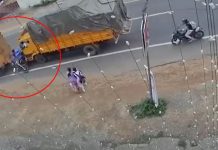Traffic laws are necessary to prevent crashes by defining the orderly movement of vehicles, pedestrians, and other users of public highways. Remember, traffic laws exist for your safety; failure to obey them can result in crashes that may seriously injure or kill you or others. To obey the laws, you must first know and understand them.
turn from a roadway, travel through an intersection, or make any other traffic related movement. The law establishes right-of-way in all situations. Vehicle drivers (including bicyclists) and pedestrians should always understand the rules related to right-of-way, and remember that right-of-way is something to be given, not taken.
There may be instances in which you as a driver or pedestrian have the legal right-of-way over someone else, even though the other person does not realize it and is not obeying the rules of the road. In those instances, the right-of-way should be yielded in order to prevent a crash.
The following is a list of the most common situations in which right-of-way questions are faced in real life:
- When traveling on a roadway that intersects with another roadway, if you are faced with a stop sign, but other traffic is not, you may proceed only after stopping and yielding the right-of-way to any other vehicle or pedestrian either in the intersection, or so close to the intersection as to make it dangerous to travel through the intersection;
- At intersections where there are no stop signs, yield signs or other traffic signals, if two vehicles come to the intersection at the same time, the driver of the vehicle on the left must yield to the driver of the vehicle on the right;
- At a four-way intersection where all drivers are faced with stop signs, all drivers must yield to pedestrians; otherwise the vehicles should proceed through the intersection in a “first to arrive, first to proceed order.” If two vehicles reach the intersection at approximately the same time, yield to any vehicles on your right.
- Important points to remember:
- Take your turn when it comes if it is safe to do so; do not unnecessarily delay traffic;
- If another driver tries to take your turn, even if you have the right-of-way, let the other driver proceed. It might prevent a traffic crash;
- Care, courtesy and common sense should govern your actions.
- Important points to remember:
- When making a left turn at an intersection, or into an alley or driveway, yield the right-of-way to all traffic coming from the opposite direction;
- When approaching a yield sign, slow down to a safe speed and be prepared to stop. If necessary, stop and only proceed when it is safe to do so;
- When the roadway you are traveling on is merging into other traffic without stopping, adjust your speed and vehicle position to allow you to merge into the new lane safely. If traffic from another roadway is merging into the roadway you are traveling on, safely change lanes away from the merging traffic if possible. If it is not possible to change lanes away from the merging traffic, adjust your speed and vehicle position to safely allow the traffic to merge.
- If you are about to enter or cross a highway from an alley, private road or highway, you must stop and yield the right-of-way to all other pedestrians and vehicles already traveling on the roadway or sidewalk you are entering or crossing



















